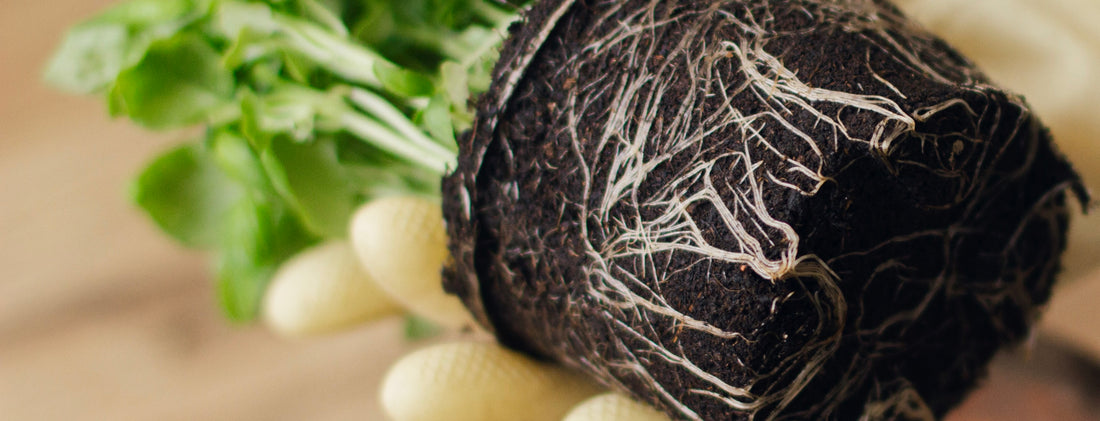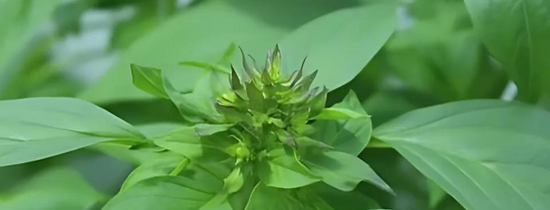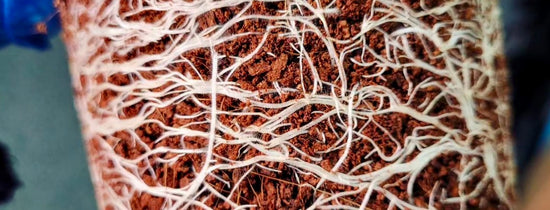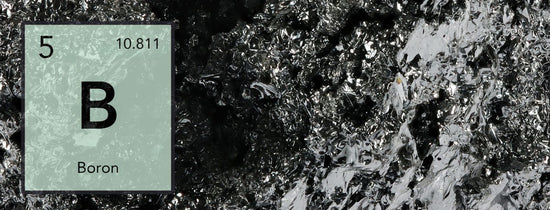Mycorrhiza is a mutual symbiotic association between a fungus and a plant. The term mycorrhiza refers to the symbiotic role of the fungus in the plant's root system.
Endomycorrhizae is a type of fungi known to form mutually symbiotic relationship between fungi and plant roots, where roots provide carbohydrates for the fungi and the fungi transfer nutrients and water to the plant roots.
Endomycorrhizae is specifically a fungi that penetrates the root, rather than existing solely on the outer layer of the root, like Ectomycorrhizae. Endomycorrhizae fungi lives in the roots and thereby attracts nutrients for the plant. It is believed that up to 80% of vascular plants rely on or use this fungi for attracting and assimilating nutrients into their system.
This direct relationship improves:
- Plant nutrient absorption
- Plant water uptake
- Overall plant health
- Drought tolerance
- Soil / media quality and health
- Disease protection & resilience
The combination of the above benefits will lead to a healthier and more vigorous plant that will generally grow at a higher rate than a plant without a mycorrhiza relationship.
Some forms of Mycorrhiza produce humic compounds and organic 'glues' that bind coco media or soil particles together improving the substrate porosity. The naturally occurring humic compounds that are formed help suspend positive ions in place ready for absorption, providing your plants essential trace elements that normally may not be readily available.
Mycorrhizas are often divided into ectomycorrhizas and endomycorrhizas. The two types are differentiated by the fact that the hyphae of ectomycorrhizal fungi do not penetrate individual cells within the root, while the hyphae of endomycorrhizal fungi penetrate the cell wall and attach to the cell membrane.
Endomycorrhiza includes arbuscular, ericoid, and orchid mycorrhiza, while arbutoid mycorrhizas can be classified as ectoendomycorrhizas. Monotropoid mycorrhizas form a special category.
Mycorrhiza are classified into 5 major groups:
Arbuscular: Arbuscular mycorrhiza fungi (AMF) are soil microorganisms able to form mutualistic symbiosis with most terrestrial plants. Arbuscules are the site of nutrients exchange between the plant and the fungi. Another characteristic of this symbiosis is the presence of a large mycorrhizal network around the root system. This is the most commonly found form of endomycorrhizae in most crop plants.
Ericoid: Ericoid mycorrhizal fungi establish loose hyphal networks around the outside of hair roots, from which they penetrate the walls of cortical cells to form intracellular coils that can densely pack individual plant cells.
Arbutoid: Arbutoid mycorrhizas are, like those of Ericoid and Monotropoid mycorrhizas, found in the plant order Ericales. The fungi of arbutoid mycorrhizas are basidiomycetes, often the same fungal species that form ectomycorrhizal associations.
Monotropoid: Monotropoid mycorrhiza occurs in species of Monotropa, non-chlorophyllous plants growing under forest trees like Fagus, Pinus, Quercus and Salix as epiparasites depending on the fungal partner. Monotropa and associated trees are connected by mycelium of a common mycorrhizal fungus Boletus.
Orchid mycorrhizae: Orchid mycorrhizae are symbiotic relationships between the roots of plants of the family Orchidaceae and a variety of fungi. Nearly all orchids are myco-heterotrophic at some point in their life cycle. Orchid mycorrhizae are critically important during orchid germination, as an orchid seed has virtually no energy reserve and obtains its carbon from the fungal symbiont.
Conclusion:
It's undeniable that mycorrhiza and specifically endomycorrhizae are highly beneficial to plant life and provide a huge boost to your plant's growth and health overall.
There are many different mycorrhiza products out there, hopefully this tutorial helps educate you on to what type of mycorrhiza fungi you want for your plants. Endomycorrhizae has proven to be a highly effective boost to most crop plants and an invaluable addition to your garden, especially those growing in sterile hydroponic mediums such as coco coir.
#growwithus
Reference - Sciencedirect







